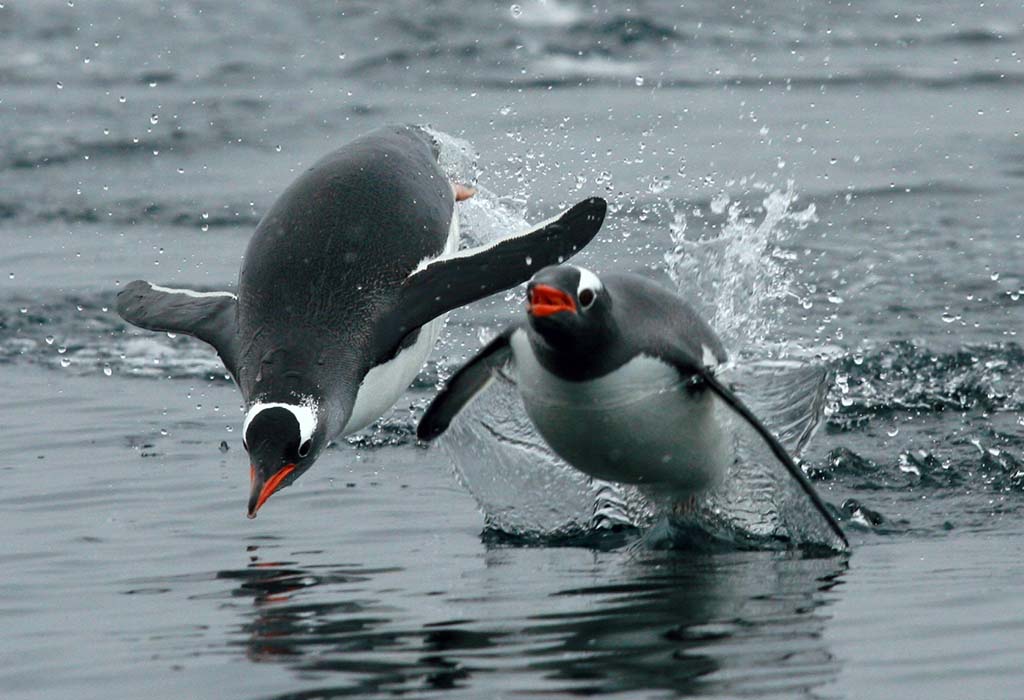Answering the penguin call
Gentoo penguins (Pygoscelis papua) are easy to identify by their distinctive bright red-orange bill and white patches above their eyes. They’re the third largest type of penguin—adults weigh between 5 and 8 kilograms and are around 30 centimetres tall. Eighty per cent of gentoo penguins live at South Georgia, the Falkland Islands and the Antarctic Peninsula.
Gentoo females lay two eggs, which the parents look after within a circular nest for just over a month. The parents take it in turns to look after the eggs—one keeps the eggs warm while the other goes out to forage for food. Gentoos eat fish, squid and krill, though apparently females eat more crustaceans, and the blokes prefer fish. They generally forage at sea close to the breeding colonies, which allows for frequent feeding of the chicks. On average, gentoos swim at around 4–6 km/hr, but can move pretty quickly if they want to—over short distances they can get up to 35 km/hr.
Gentoos tend to hang out in breeding colonies that can be just a few dozen pairs, or up to thousands. Living in these groups potentially helps protect the penguins from predation and improves their foraging efficiency.

When they are out and about diving for fish and krill in the ocean, gentoos keep in contact with each other using a variety of calls. Wanting to know more about these conversations at sea, researchers recently fitted out 10 gentoos with video cameras and microphones during two breeding seasons.
The researchers analysed 598 offshore calls. It appeared that, while the gentoos were foraging at sea, the calling was largely related to grouping behaviour. Following a call made at the surface, the gentoos tended to move in a similar direction. Nearly half the penguins congregated in groups within a minute after a call. The penguins that gathered in a group performed shorter and shallower dives than those that did not. However, other diving behaviour did not appear to be particularly related to calling, or to the penguins’ success in obtaining food. So it was hard to conclude whether the penguins were actively engaging in group foraging behaviours that improved their ability to capture prey or find food.
To better understand the penguins’ behaviour, the researchers would like to equip more individual penguins with cameras so that more detailed observations can be made about their interactions. Penguin cam—it’s not exactly Happy Feet but makes for a pretty cool movie nonetheless.





